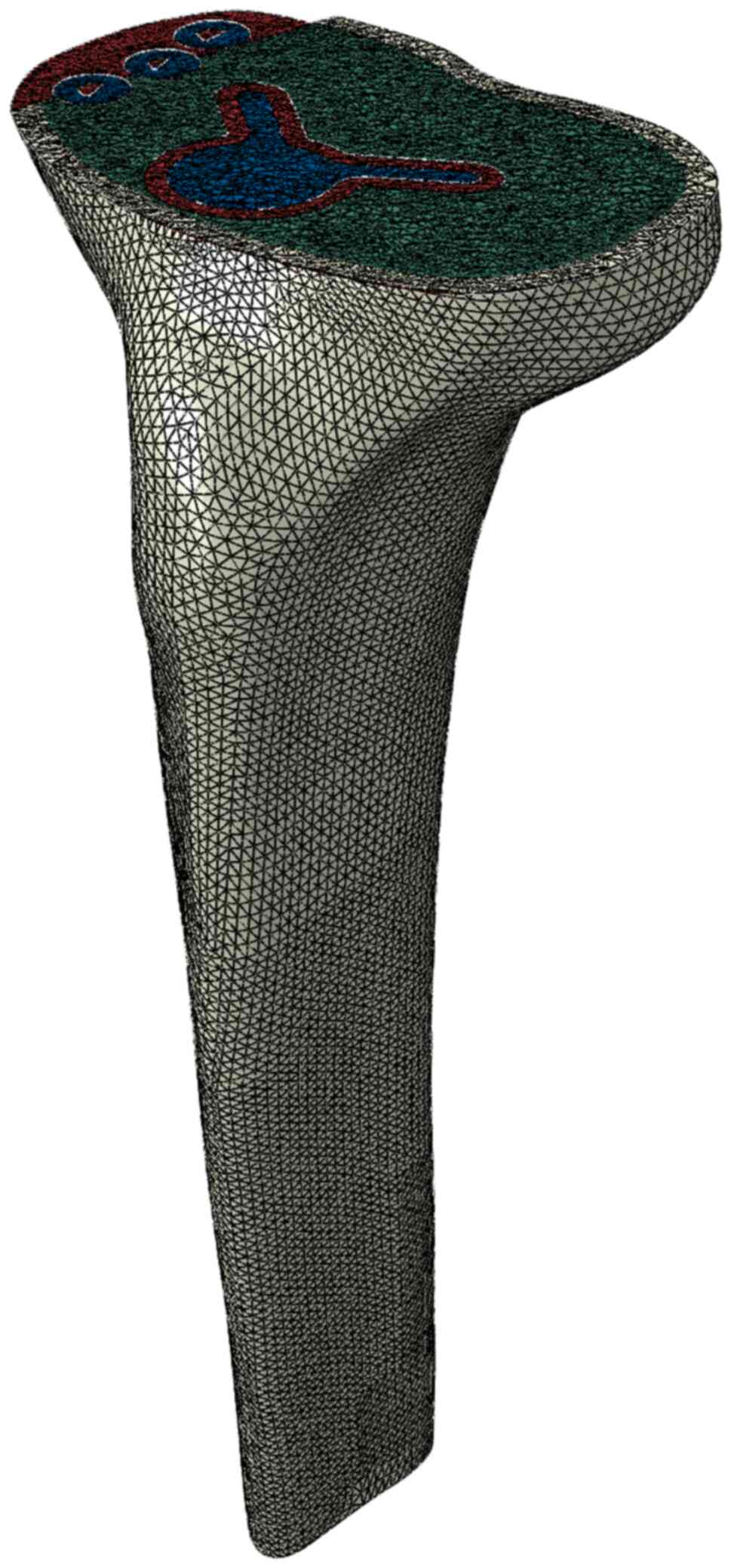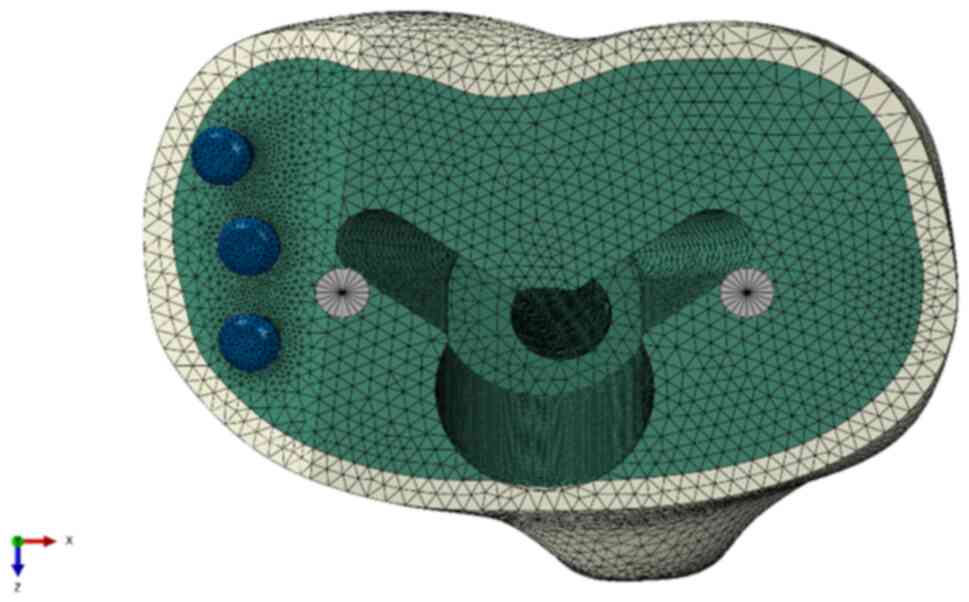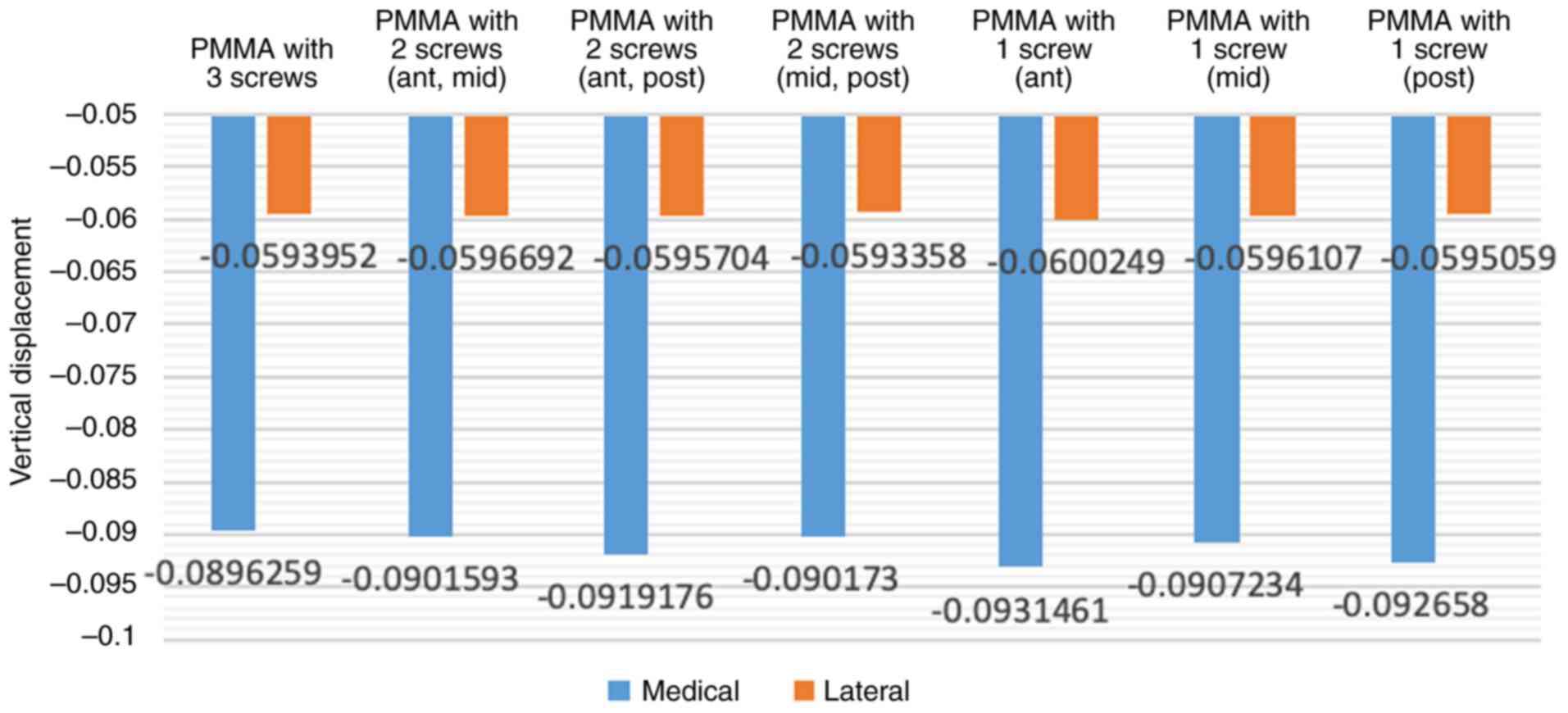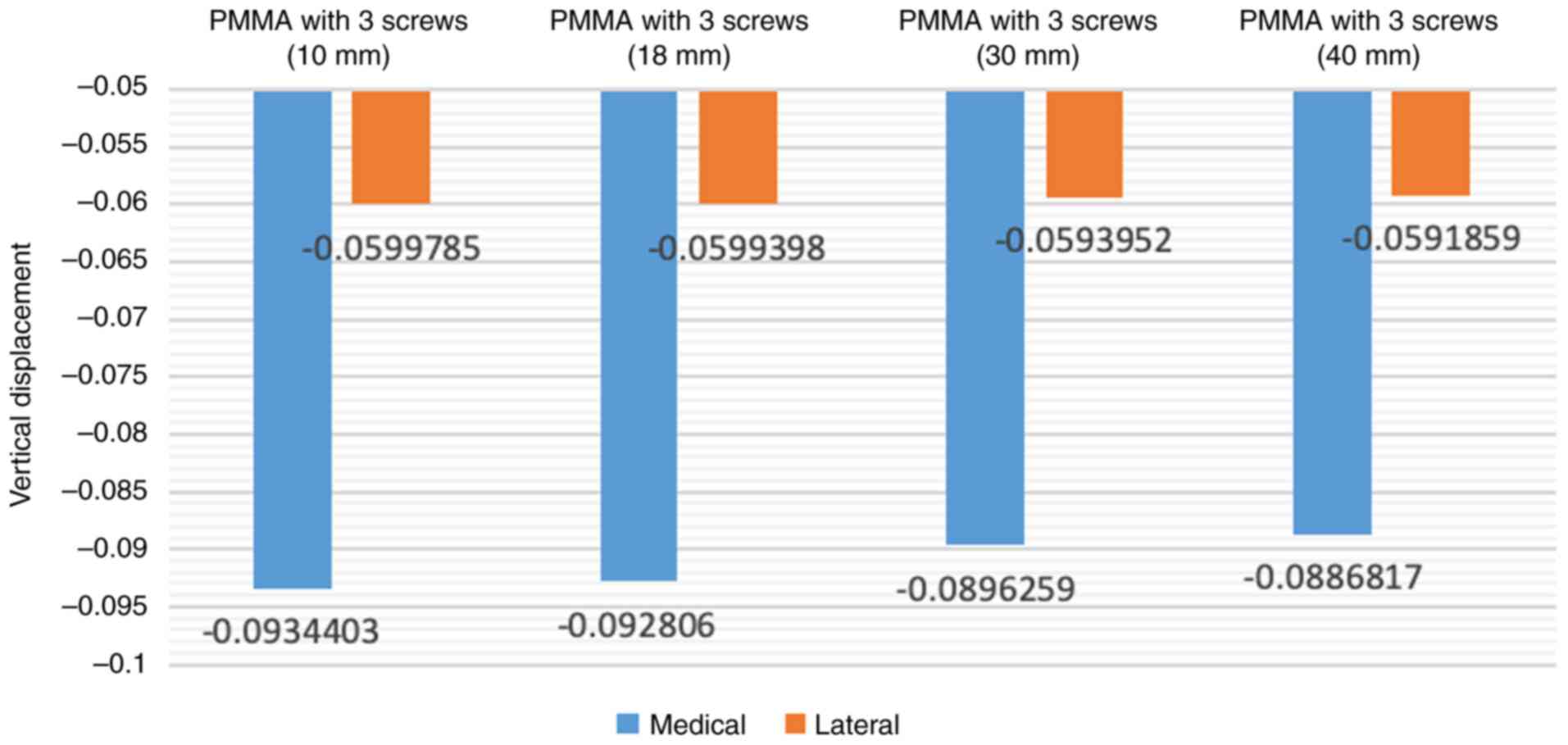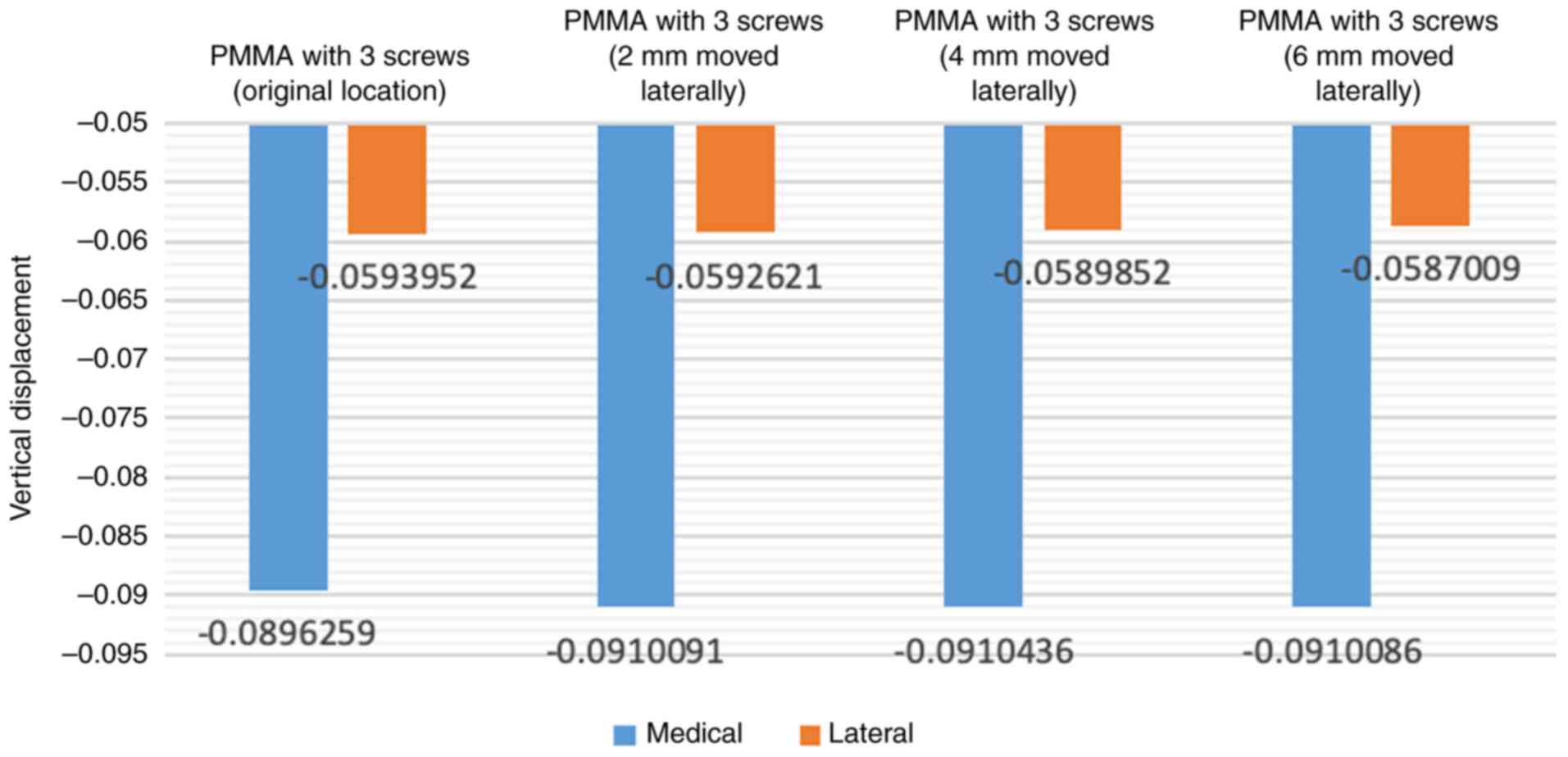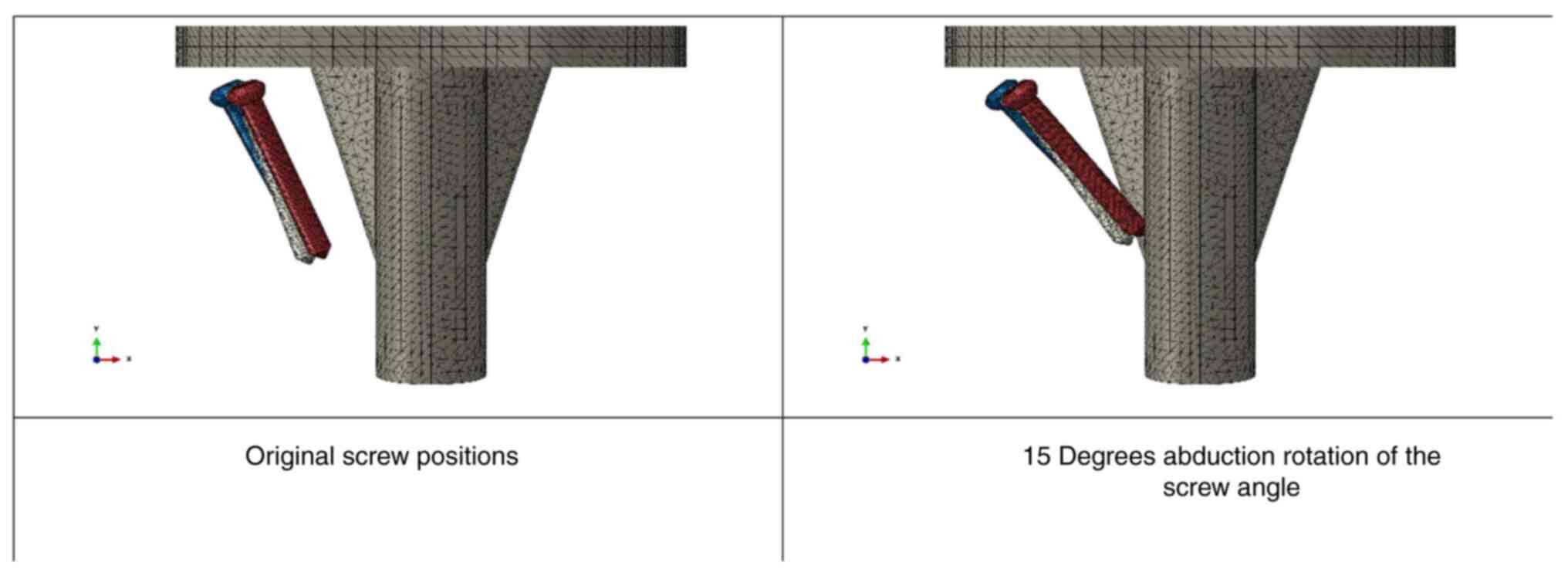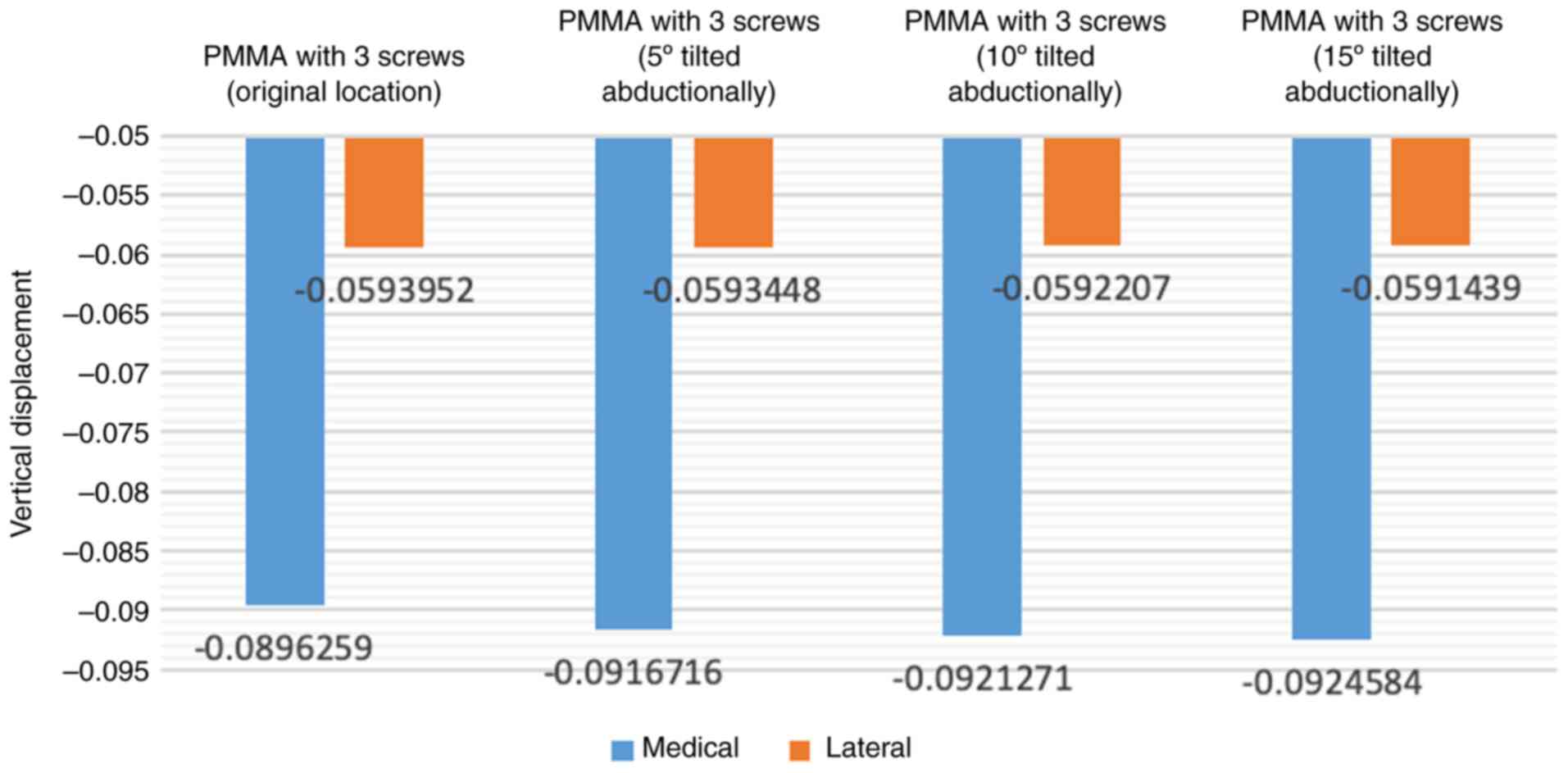Biomechanical evaluation of screw and cement placement strategies for treating medial uncontained tibial defects in total knee arthroplasty: A finite element analysis
- Authors:
- Published online on: June 25, 2024 https://doi.org/10.3892/mi.2024.171
- Article Number: 47
-
Copyright : © Kwanyuang et al. This is an open access article distributed under the terms of Creative Commons Attribution License [CC BY 4.0].
Metrics:
Total
Views: 0 (Spandidos Publications: | PMC Statistics:
)
Total PDF Downloads: 0 (Spandidos Publications: | PMC Statistics:
)
Abstract
Total knee arthroplasty faces challenges in the management of medial uncontained tibial defects, affecting prosthesis stability and implant survival. The use of screws and bone cement is a preferred approach; however, optimal screw insertion techniques lack consensus in the existing literature. The present study aimed to address this gap by exploring optimal screw and cement placement strategies, focusing on their biomechanical implications. The present study conducted a finite element analysis using a knee prosthesis model with a defined uncontained tibial defect. Various parameters were systematically adjusted, including the number of screws (1, 2 or 3 screws), screw lengths (10, 18, 30 or 40 mm), lateral‑medial screw positions (2, 4 or 6 mm laterally) and abduction rotation angles (0, 5, 10 or 15 degrees). These adjustments were made to evaluate their specific and combined impacts on the vertical displacement and abduction angles of the tibial tray. The results revealed that incorporating three‑screw reinforcement markedly reduced vertical displacement, while the single screw in the middle position exhibited superior performance in preventing the deformation of abduction angles compared to scenarios with two screws at anterior and posterior positions without a middle screw. Longer screws and smaller abduction angles contributed to decreased movement of the tibial component. Furthermore, the lateral adjustment of the screw position led to an increase in vertical displacement values, reaching ~1.5% when shifted 6 mm laterally. On the whole, the finite element analysis in the present study suggests that, for the treatment of medial uncontained tibial defects, three‑screw reinforcement is advantageous for larger defects. Longer screws and a smaller abduction angle are deemed favorable. Moreover, the results underscore the superiority of medial screw placement over lateral placement. It is imperative to note that further clinical validation is essential to corroborate the biomechanical implications observed herein.



